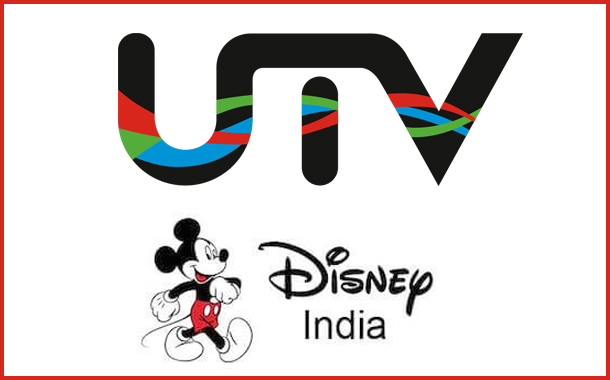Walt Disney was going through a ‘wait and see’ status since it has closed down its Hindi Film Production operations in India. Now, the renowned showbiz firm is back in action with the restructuring process on in full swing under the leadership of Mahesh Samat as its managing director who has re-joined the company on October 25, 2016 after four years.
The company has been working towards forming up an international structure which will now focus on its core strengths – Hollywood films and consumer products business. The restructuring under the new leadership of Mahesh Samat after the exit of Siddharth Roy Kapur is part of revisiting Disney India’s Business Model that is likely to be in complete deviation from the purpose of Disney acquiring UTV Software Communications Ltd.
In fact Disney India’s restructuring case is similar to Turner’s investment in acquiring Imagine TV from NDTV, another case of a failed FDI in Indian Media and Entertainment sector. As Disney India has ended up closing down many ambitious verticals of UTV such as TV Content Business, New Media, Motion Pictures barring the Broadcasting Business that runs handful of niche Channels.
The shutting down of verticals has resulted 600 to 800 job loss and to has reached a situation where, even the payments related to Disney India is being processed by its Shangai (China) office.
When the business tie-up between UTV and Disney was made, there was a huge expectation among the top notches, organizers, marketers, onlookers and the public.
Ronnie Screwvala is known for his dynamic success in the television industry and the tinsel world since 1990 when he founded UTV. Almost all the movies produced UTV Motion Pictures had their way to be successful.
Similarly, Walt Disney Pictures has its success story along the path in the history of global entertainment.
Let’s trace through the past track to see where the amalgamation went off track:
The journey of takeover was gradual which began in 2006 when Disney India acquired Hungama TV for $30.5 million and bought 14.9% stake in UTV for $15 million the same year. Then in 2008, Disney picked up 15% stake in UTV’s Television subsidiary for Rs. 119 crore and raised stake in UTV Software Communications to 32.1% for Rs.805 crore. After three years the firm increased stake in UTV to 50.44% during 2011 when Ronnie Screwvala and other promoters held 19.82% and the same year within a few months, Disney offered Rs.1,000 per share to acquire remaining 49.6% stake in UTV. It was in February 2012 Disney completed UTV acquisition for $454 million.
During that period of time Disney India had high expectations on a flourishing business future with well organised placements and strategies. However, It didn’t happen so.
The very simple factor for the drawback is the difference in principles and regulations that vary between the two territories. Unlike in India, the rules and regulations are stringent in USA and the process of performance and execution depend on certain inflexible formal directives, which is the compliance practices involved in corporate governance.
For example, GAAP Accounting Principles adopted by the U.S. Securities and Exchange Commission and FCPA – the Foreign Corrupt Practices Act 1977, are some of the factors that needs high-level of corporate governance practices. The idea of FCPA is to make it illegal for the companies and their supervisors to influence foreign officials with any personal payments or rewards.
During the process of media operations, the rules and practices that were framed to safeguard and regularise the process of performance and execution were observed as speed breakers to hinder the activities.
Disney India found it hard to implement the FCPA regulations in India where the operations were not easy to be executed within the frame of regulations as set by the Act mainly due to the compliance issues.
The process of expansion and operations could have been much progressive if the purpose of the Foreign Direct Investment (FDI) was well utilized. FDI is the major monetary source for economic development in India. However, Indian Media and Entertainment sector has so far witnessed very few high profile FDI’s and this kind of failed FDI cases will only set a bad example for the future investment ecosystem.
In the process of Disney’s restructuring process, two top level executives from the mainstream in India, Nikhil Gandhi (Head of Revenue – media networks) and Sameer Ganapathy (Head of Interactive) have quit. Since the company has decided to merge the consumer products and interactive business in India, Sameer Ganapathy was left with only one choice that is to opt out. Similarly, the revenue part of Media Networks Business of all TV channels was handled by Nikhil Gandhi and he too was put to opt out of his position.
As a part of restructuring process, the company had already retrenched its employees to the tune of about 700. Now, the unit of consumer products business and interactive business is headed by Abhishek Maheshwari and Media networks business is headed by Vijay Subramaniam.
On the other hand, Siddharth Roy Kapurand Karan Johar are teaming up with Ronnie Screwvala to initiate and take up on the next phase of action to establish an all new media company which is reported to be comprising Film production, Film Distribution.
while, Walt Disney is all set to make its progression with finely devised strategic plans to restructure its operations in India under the leadership of Mahesh Samat.
The new ventures and the results will say all about the reformation of Walt Disney in India and the proposed new company of ex-UTV moguls who are all set to get restructured and travel in two different tracks.

















